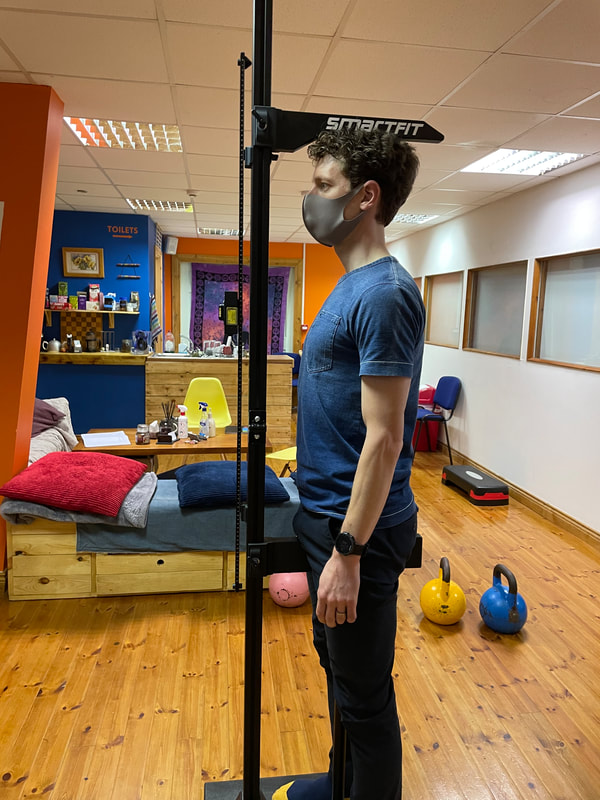|
Buying a new bike? Get measured so that you know you are buying the correct frame size for you. I’m approaching my 800th bike fit since starting the physio-led bike fitting service over 5 years ago. I’ve seen a lot! I’ve seen bikes that are simply too big or too small for their owners. In these instances, we’ve had to make drastic changes to the saddle position (saddle pushed fully forward or fully back) and/or stem length in order to try and make the bike work for the rider. This effectively takes the set-up of the bike away from how the manufacturer wants it to be, and at the same time impacting on how the bike was designed to handle and perform on the road. I’ve also witnessed the variation in sizes that each bike manufacturer stamps on their bikes when compared to bikes from other manufacturers. As in, a Medium frame for a Giant does not equal a Medium for Trek etc. And how some cyclists can have longer arms and shorter legs for their height compared to another of the same height with longer legs, shorter torso and arms. TOO MANY VARIABLES I’ve also tried and failed to help cyclists over the years in their quest to get the correct frame size when buying a new bike. I would ask them if their current bike felt good so that they could then take the stack and reach measurements from that and apply them to the new bike. Another approach was to carry out a physio bike fit on the client and their current bike and then make a judgement based on that bike fit. Both of which are not very accurate and contain a nice bit of guesswork. SOMETHING HAD TO GIVE It was the beginning of this year when I asked my trusted source of bike fitting info, GebioMized, what they do when put on the spot by clients to recommend the appropriate frame size when buying a new or second hand bike. For anyone who’s new to my physio bike fitting approach, GebioMized are the makers of my most treasured bike fitting tools, the saddle pressure and foot pressure mapping gadgets. They strongly recommended another German outfit called Radlabor who developed the SmartFit system to match cyclists with the correct frame size using a massive database of bikes and body measurements. The purpose of this blog is to explain to you how this system works and why it is worth its weight in gold or more appropriately, carbon! THE FUTURE OF BIKE SELECTION A nice way to explain how SmartFit works is to use an example of a recent client who wanted to know what bike, out of a choice of three different bikes, would suit him the best. Let’s call him Tommy! Tommy, a previous client of The BikeFit Physio, called into the clinic for the “bike sizing before buying service” and get measured using the SmartFit measuring rig. The below short video shows the rig in use with my colleague and fellow bike fitter Dylan acting as a model. The measurements needed from Tommy are:
The inside leg measurement is accurate in that it uses a hydraulic measuring tool to ensure that the reading is accurate and taken from the anatomical inside leg position. Here’s a sneak peak of this measurement with Dylan. The arm length is very important as it will highlight if the cyclist has the capacity for a longer reach or not. A situation where their arm length is shorter than the average arm length for their height would point towards a reduction in the ability to reach. Once we gathered all of Tommy’s measurements, we then plugged them into the SmartFit software and then brought up the three different bikes that Tommy was interested in. A) BMC Teammachine B) Trek Emonda SLR 9 C) Cannondale SuperEvo The SmartFit database of bikes and body measurements is able to instantaneously match the rider with the frame size and geometry that will suit him/her the best and in this case it was the Trek Emonda SLR 9. The huge, ever growing database of bikes includes the exact measurements of each bike on there with regards to top tube length, seat tube angle, head tube angle etc. They even reveal the stem length for each frame size within the same model range. The software will tell us what changes to make to a bike if going for a smaller or larger size in order to bring it closer to the ideal size for the rider. With all this information to hand, we can then select certain bikes and compare them with each other. Lastly, if you haven’t a notion what bike would be best for you, or didn’t have time to pick out a selection of your preferred options, not to worry. We can plug a wide selection of bikes into the software to find something that will suits your needs.
To read up more on the this service, click here to be taken to the dedicated page on the website or just go ahead and book your appointment below. Thanks for reading and sharing, John Phelan Chartered Physio and Nutritionist
2 Comments
|
John
|
|
|







 RSS Feed
RSS Feed